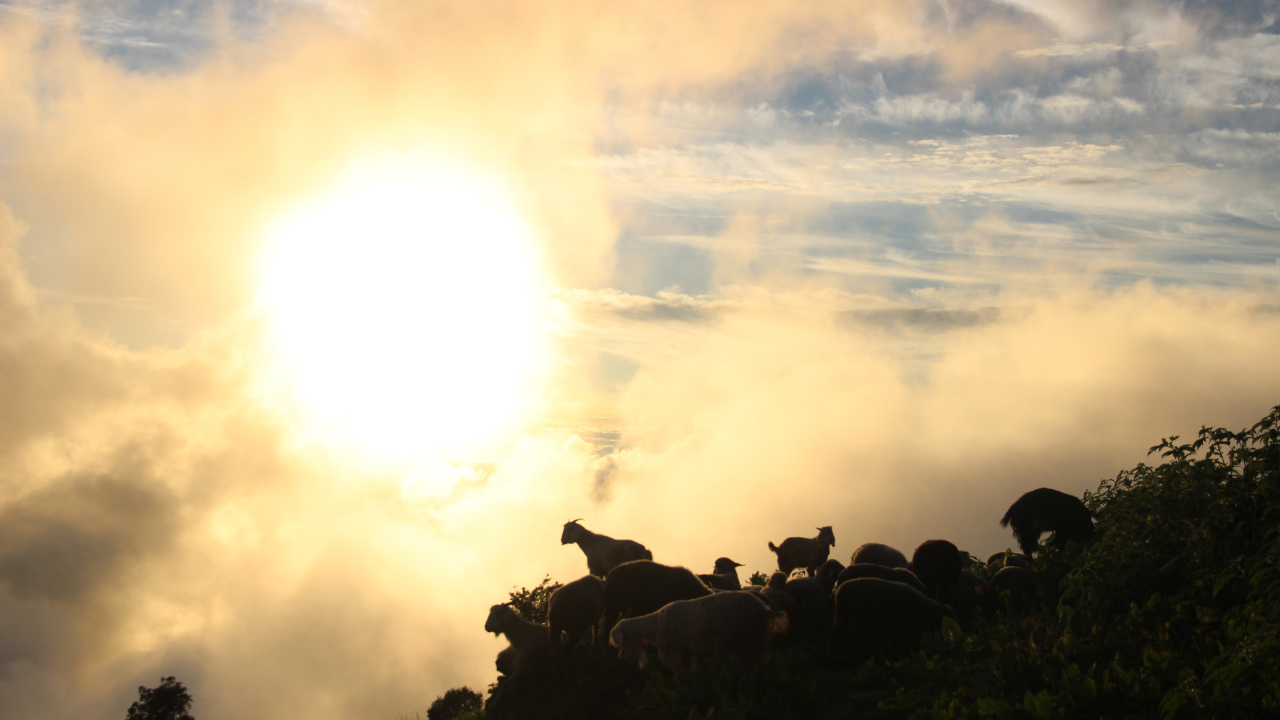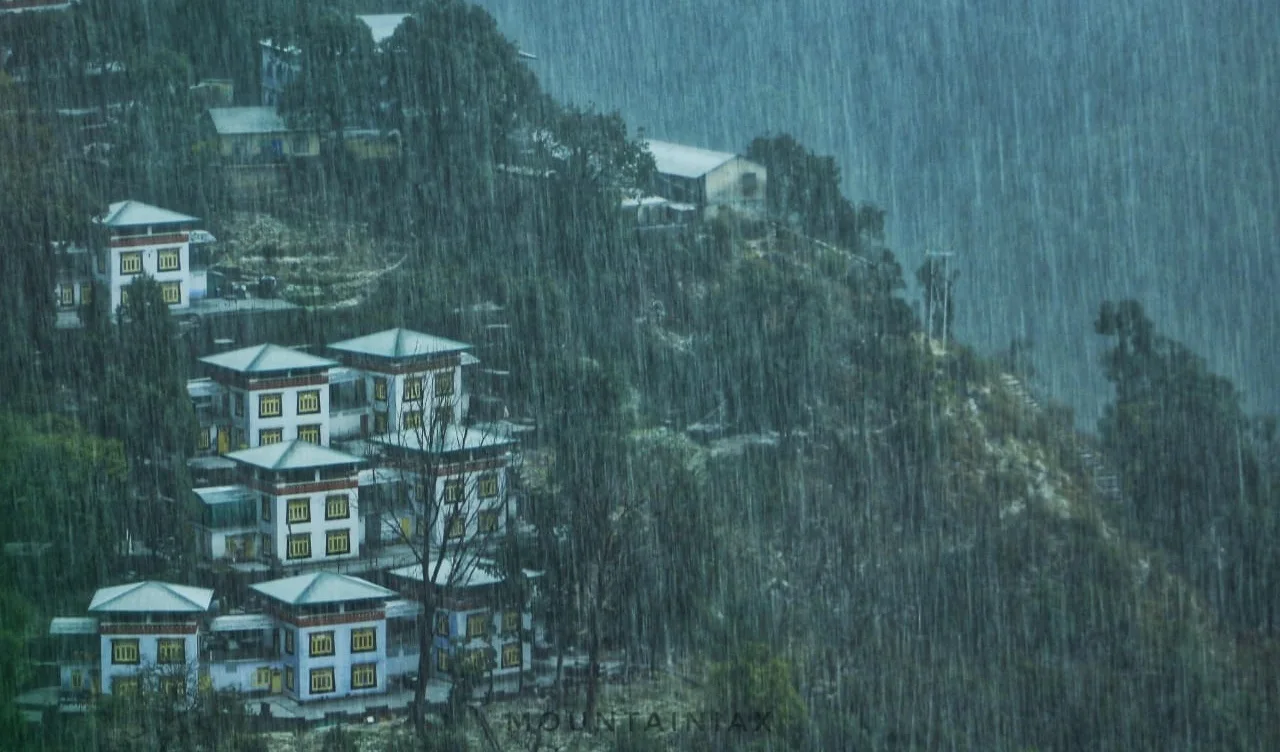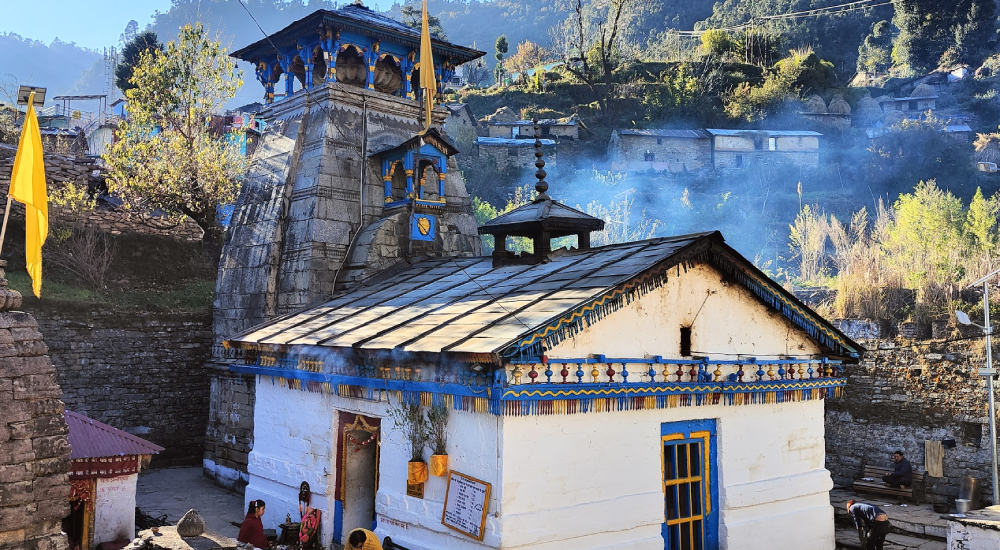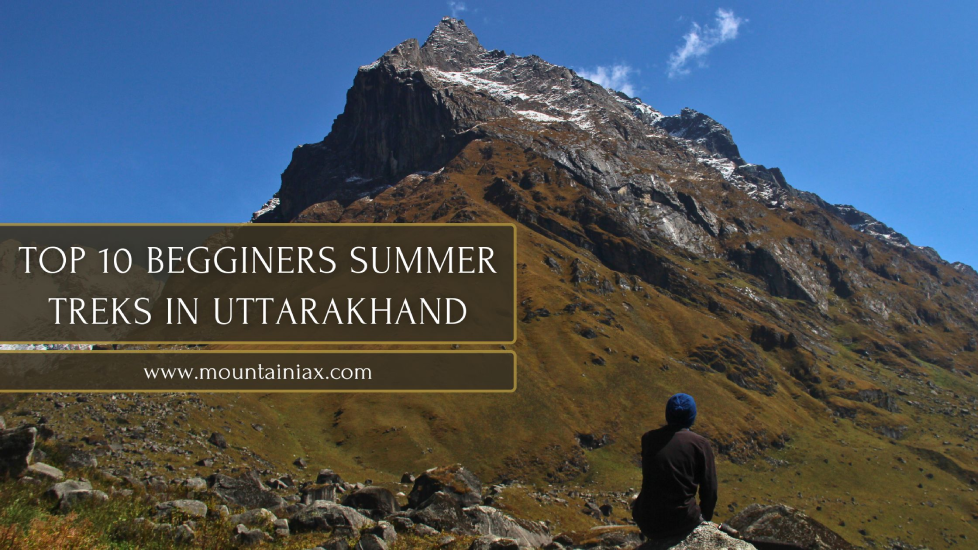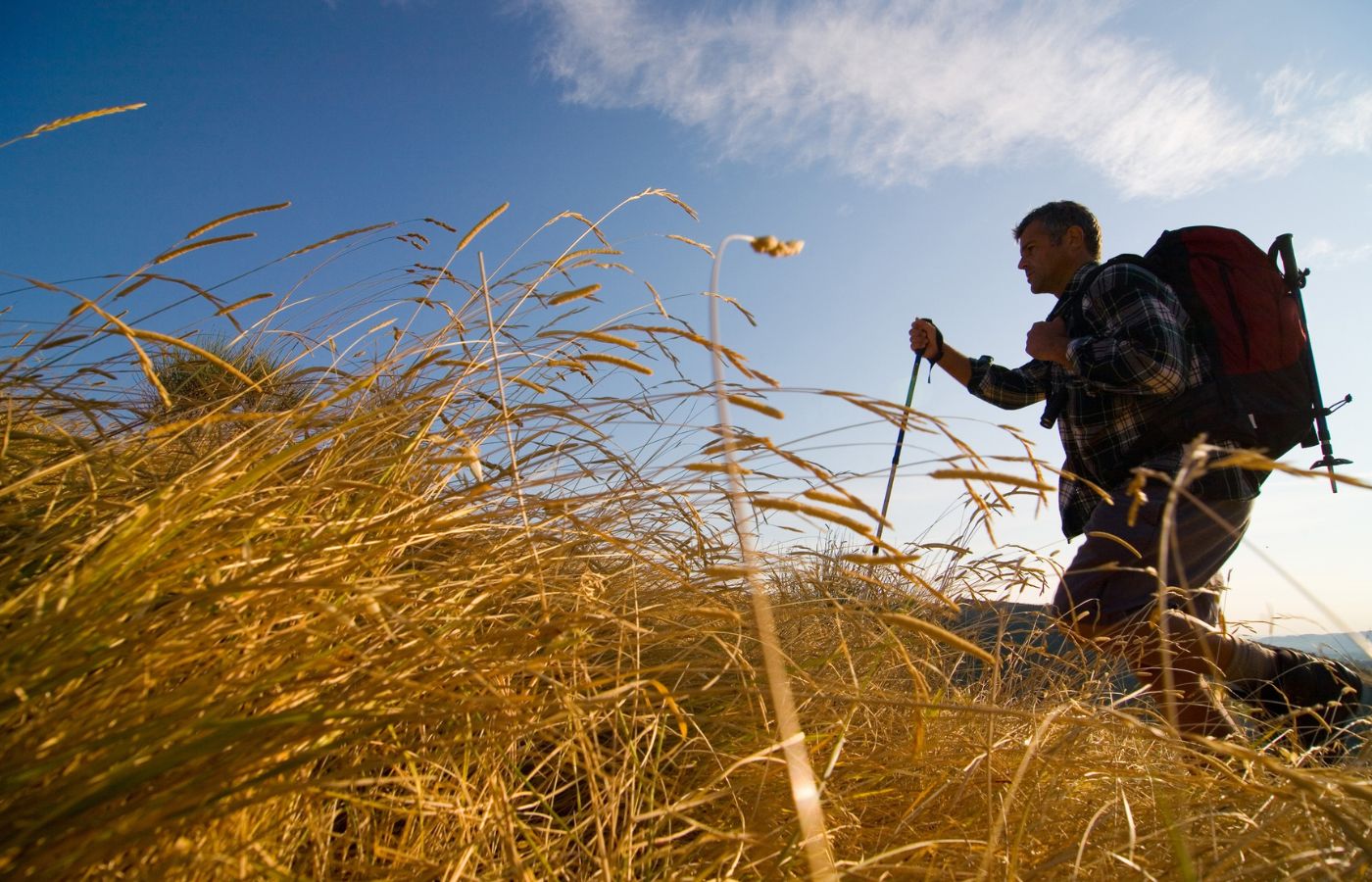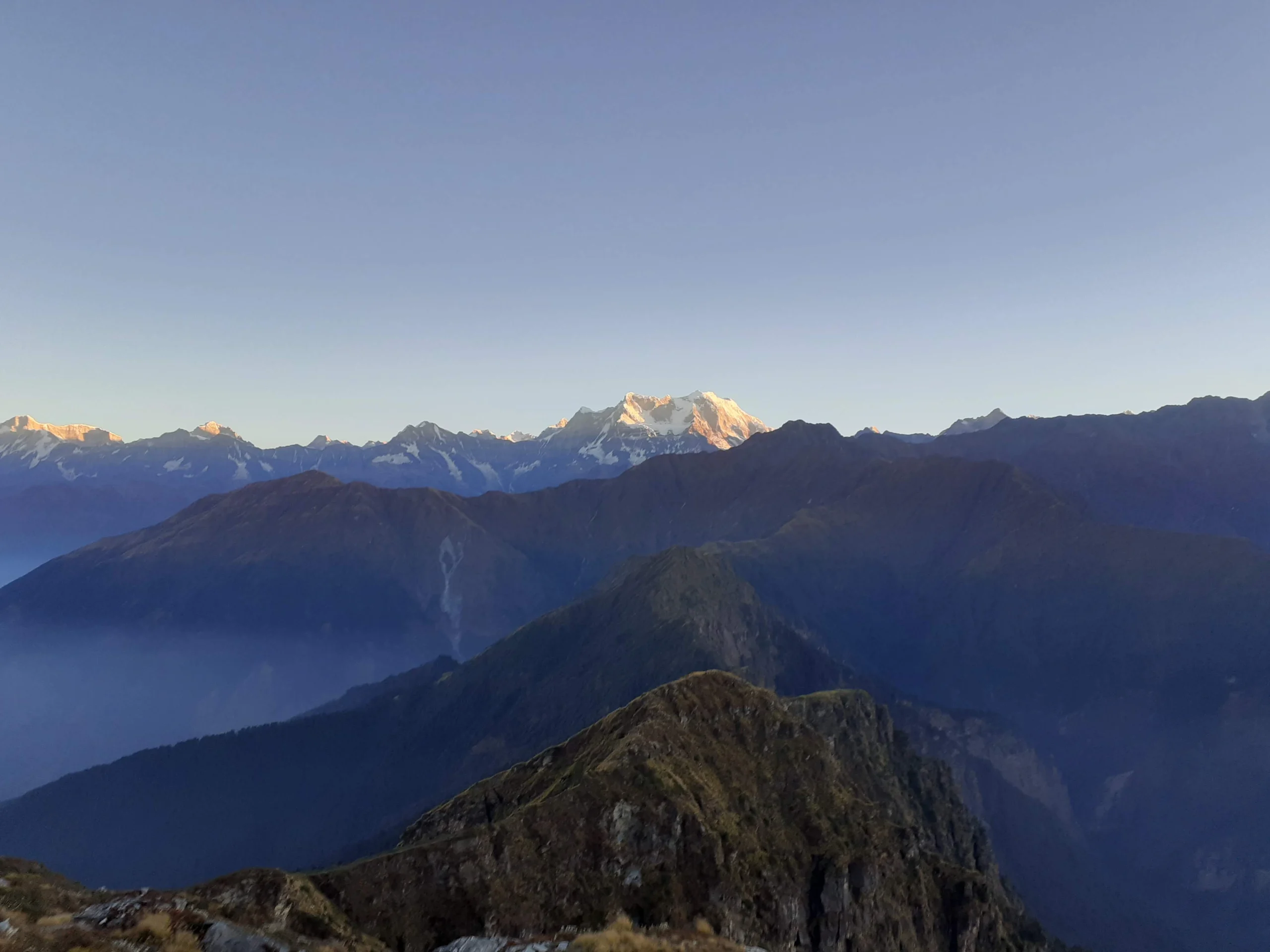Not every place demands attention. Some places just ask you to slow down and listen without saying a word. That’s the kind of place The Goat Village is. Tucked into the folds of the Garhwal Himalayas, about halfway up the Nag Tibba trek, this eco-retreat quietly invites people in, not with luxury, but with the charm of simplicity and rhythm of nature.
It’s not just somewhere to stay. It’s a pause. A detox. A memory that lingers.
Where It Is – And Why That Matters
The Goat Village sits at around 2,000 meters above sea level, surrounded by forested slopes and terraced farmland. It’s accessible only by foot—a two to three-hour hike from Pantwari, the starting point of the Nag Tibba trek. And that’s part of its magic.
No cars. No horns. No sudden distractions. Just the crunch of your boots on the trail and, if you’re lucky, the soft rustle of pine needles in the wind.
From Dehradun, it’s a four-hour drive to Pantwari. From there, the journey is on foot. Steady. Quiet. Gradual. For many, that’s where the trip really begins. A break from screen-scrolling and constant noise.
Handbuilt, Humble, Honest
The cottages at The Goat Village are built the old way. Stone, mud, wood. No fancy plaster. No modern finishes. They follow traditional Garhwali building techniques that have stood the test of time and even earthquakes. There’s a certain honesty in how they’re put together. Nothing pretends to be more than it is.
Inside, you’ll find thick walls, warm bedding, skylights that bring in natural light, and windows that open out to Himalayan views you’ll want to frame. Lighting is solar or candle-based. Electricity isn’t a guarantee here and that’s the point.
Rooms have no TV, no plug points, and definitely no Wi-Fi. The idea is to live as the locals do, slowly, simply, and without rush.
The Food Straight From the Soil
One of the most memorable parts of any stay here is the food. Not because it’s fancy, but because it’s real. Vegetables come straight from the surrounding farms. Herbs are plucked just before your tea is brewed. Eggs are collected from the on-site poultry each morning. Meals are cooked in simple but heartfelt Garhwali style, with ingredients like finger millet (mandua), red rice, pumpkin, seasonal greens, and local lentils.
Even something as simple as spinach sabzi tastes different when you know it was growing outside your room a few hours ago. And the teas! Chamomile, mint, lemongrass, tulsi… each cup feels like it was made just for you. No teabag required.
Things to Do If You Feel Like Doing Anything At All
There’s no itinerary, no must-see checklist. Just a range of quiet experiences that let you slip into the rhythm of village life.
● Goat Grazing
Yes, it’s called The Goat Village for a reason. The goats here are part of the ecosystem. Every morning and evening, locals take them out to graze, and guests are welcome to join. It’s a simple act, walking with animals, but strangely grounding.
● Harvest Time
Depending on the month, you might get to pluck green peas, dig up turmeric, or gather herbs. Locals are more than happy to show how it’s done. During November, green pea harvesting becomes a community activity and a surprisingly enjoyable one.
● Poultry Chores
The Goat Village also runs a community poultry project where visitors can collect desi eggs and learn about indigenous poultry practices. This initiative also helps educate local children, blending hands-on farming with informal weekend schooling.
● Watch the Sky
The greenhouse café, made of glass and dotted with greenery, is probably the most peaceful place in the village. In the evening, this corner turns golden with the setting sun. And at night, the stars put on a show that no city sky could match.
Slow Living & Mindful Retreat
More than a destination, The Goat Village promotes slow travel and intentional living. Guests often find themselves spending hours simply reading by the window, sketching, journaling, or sitting in meditative stillness. Bookshelves around the cottages carry thoughtfully curated titles, and the absence of Wi-Fi encourages analog reflection.
Early mornings often begin with yoga sessions facing the rising sun, with nothing but chirping birds and mountain air to accompany your practice. It’s the kind of calm that stays long after the journey ends.
The Nag Tibba Trek – One Foot in the Clouds
Nag Tibba Trek is one of the most accessible treks in Uttarakhand. From Pantwari to the summit, the Nag Tibba summit distance is about 8 km one way. Add the return, and it becomes a manageable 16 km round trip. The summit stands tall at 3,022 meters (10,000 ft) and rewards trekkers with clear views of the Swargarohini, Bandarpunch, and Kala Nag peaks.
For those staying at The Goat Village, the hike to the summit becomes easier, as they’ve already reached the halfway mark elevation-wise. A day hike from the village to the top and back is easily done, with plenty of time to relax afterward.
Key Trek Info:
- Nag Tibba trek starting point: Pantwari
- Nag Tibba trek from Dehradun: 4 hrs drive
- Nag Tibba Trek Best time: September to June
- Nag Tibba trek difficulty level: Easy to Moderate
- Nag Tibba trek temperature:
- Winter: -2°C to 10°C
- Summer: 12°C to 25°C
- Winter: -2°C to 10°C
- Nag Tibba trek from Delhi: Drive/train to Dehradun + road to Pantwari
A Movement in the Mountains
The Goat Village is more than a picturesque farmstay. It’s part of a larger vision by The Green People, a group working to encourage reverse migration, helping mountain communities reclaim their roots by creating meaningful, sustainable livelihoods.
Through goat farming, organic agriculture, tourism, and education, they’re creating reasons for villagers to stay and reasons for travelers to care.
When someone stays at The Goat Village, they’re not just a guest. They become part of this larger story. A story of revival, respect, and reconnection.
Final Thoughts
The Goat Village doesn’t try to impress. It doesn’t need to. It quietly reminds you of what it feels like to be unhurried, undistracted, and present. In a world where travel often means check-ins and checklists, this retreat offers something else, a gentle reminder that sometimes, doing nothing is doing everything.
It’s not for everyone. But for those who go with an open mind and leave with a quiet heart, it stays.
If you are looking for vibrant experience in the himalayas connect with: mountainiax

